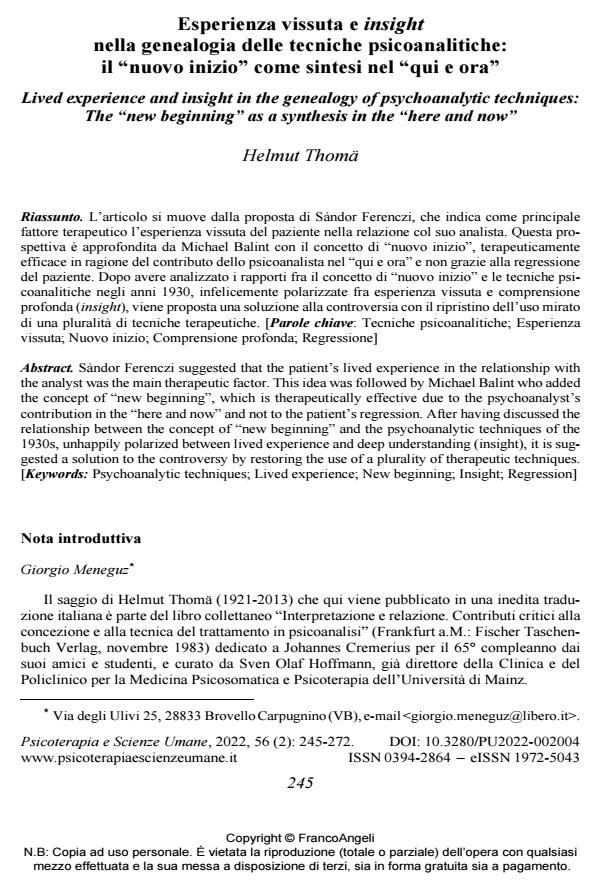Esperienza vissuta e insight nella genealogia delle tecniche psicoanalitiche: il "nuovo inizio" come sintesi nel "qui e ora"
Titolo Rivista PSICOTERAPIA E SCIENZE UMANE
Autori/Curatori Helmut Thomä
Anno di pubblicazione 2022 Fascicolo 2022/2
Lingua Italiano Numero pagine 28 P. 245-272 Dimensione file 395 KB
DOI 10.3280/PU2022-002004
Il DOI è il codice a barre della proprietà intellettuale: per saperne di più
clicca qui
Qui sotto puoi vedere in anteprima la prima pagina di questo articolo.
Se questo articolo ti interessa, lo puoi acquistare (e scaricare in formato pdf) seguendo le facili indicazioni per acquistare il download credit. Acquista Download Credits per scaricare questo Articolo in formato PDF

FrancoAngeli è membro della Publishers International Linking Association, Inc (PILA)associazione indipendente e non profit per facilitare (attraverso i servizi tecnologici implementati da CrossRef.org) l’accesso degli studiosi ai contenuti digitali nelle pubblicazioni professionali e scientifiche
L’articolo si muove dalla proposta di Sándor Ferenczi, che indica come principale fattore terapeutico l’esperienza vissuta del paziente nella relazione col suo analista. Questa prospettiva è appro-fondita da Michael Balint con il concetto di "nuovo inizio", terapeuticamente efficace in ragione del contributo dello psicoanalista nel "qui e ora" e non grazie alla regressione del paziente. Dopo avere analizzato i rapporti fra il concetto di "nuovo inizio" e le tecniche psicoanalitiche negli anni 1930, infelicemente polarizzate fra esperienza vissuta e comprensione profonda (insight), viene proposta una soluzione alla controversia con il ripristino dell’uso mirato di una pluralità di tecniche terapeutiche.
Parole chiave:Tecniche psicoanalitiche; Esperienza vissuta; Nuovo inizio; Comprensione profonda; Regressione
Helmut Thomä, Esperienza vissuta e insight nella genealogia delle tecniche psicoanalitiche: il "nuovo inizio" come sintesi nel "qui e ora" in "PSICOTERAPIA E SCIENZE UMANE" 2/2022, pp 245-272, DOI: 10.3280/PU2022-002004